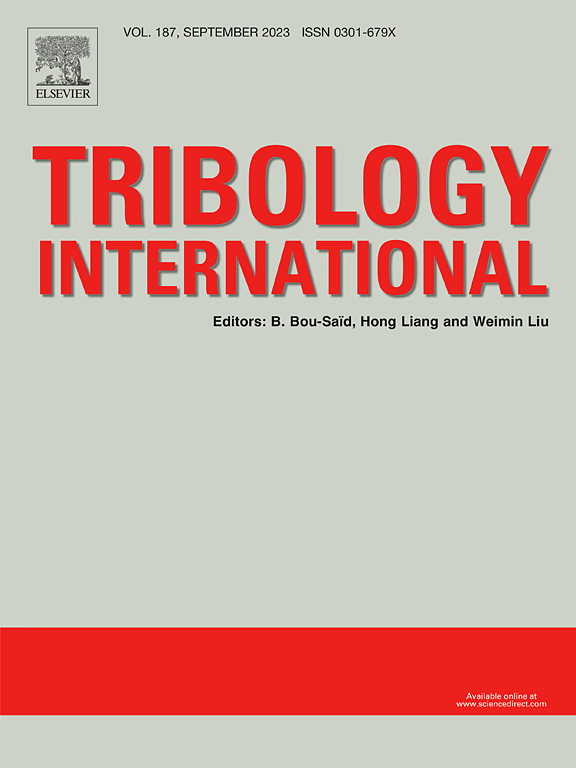Wetting properties of polymer additively manufactured surfaces – Multiscale and multi-technique study into the surface-measurement-function interactions
IF 6.1
1区 工程技术
Q1 ENGINEERING, MECHANICAL
引用次数: 0
Abstract
The functional features of 3D printing surfaces can be controlled by changing the parameters of additive processes. This study investigates the correlations between built-up angle, surface fractal complexity, and wettability in additively manufactured surfaces using Fused Deposition Modeling (FDM), Selective Laser Sintering (SLS), and Multi Jet Printing (MJT). Surface topography was measured using four optical techniques: focus variation, confocal microscopy, confocal fusion, and interferometry, across multiple scales. The study explored linear, logarithmic, and exponential regression models to identify the best correlations and scale of interactions between the built-up angle, surface complexity, and contact angle. It was found that the built-up angle significantly influences surface fractal complexity, with strong correlations (R² > 0.85) observed particularly at a scale of around 1100 µm². Confocal fusion offered the best reproducibility of measurements, especially at finer scales (< 100 µm²). Surface complexity was also found to correlate strongly with wettability, especially at scales around 1000 µm² and under 10 µm², where exponential regression models performed slightly better, particularly for MJT surfaces. Topographic measurement modes are reproducible with slightly better correlation indices for confocal fusion, between built-up angle and surface complexity. The best correlation of built-up angle, surface complexity and contact angle parameters was obtained for linear regression. The results suggest that surface wettability can be controlled by adjusting the built-up angle, with FDM and SLS surfaces transitioning from hydrophobic to hydrophilic as the angle increases beyond 70 degree, while MJT surfaces remained hydrophobic even at higher angles. The built-up angle parameter allows modeling wettability in the range of 80–120°. The study also indicates the superiority of multiscale parameters over conventional topographic characterization methods in describing additively manufactured surfaces.
聚合物添加剂制造表面的润湿性能 - 表面测量-功能相互作用的多尺度和多技术研究
三维打印表面的功能特征可通过改变增材制造工艺的参数来控制。本研究采用熔融沉积建模(FDM)、选择性激光烧结(SLS)和多重喷射打印(MJT)技术,研究了增材制造表面的堆积角、表面分形复杂性和润湿性之间的相关性。使用四种光学技术测量了多种尺度的表面形貌:聚焦变化、共焦显微镜、共焦融合和干涉测量。研究探索了线性、对数和指数回归模型,以确定堆积角、表面复杂性和接触角之间的最佳相关性和相互作用尺度。研究发现,堆积角对表面分形复杂性有显著影响,尤其是在 1100 µm² 左右的尺度上观察到了很强的相关性(R² >0.85)。共焦融合技术提供了最佳的测量重现性,尤其是在更精细的尺度(100 µm²)上。研究还发现,表面复杂性与润湿性密切相关,尤其是在 1000 µm² 左右和 10 µm² 以下的尺度上,指数回归模型的表现稍好,特别是对于 MJT 表面。地形测量模式具有良好的重现性,共焦融合模式下的堆积角与表面复杂性之间的相关指数略好。线性回归法获得了堆积角、表面复杂性和接触角参数的最佳相关性。结果表明,表面润湿性可通过调整建构角来控制,当建构角增加到 70 度以上时,FDM 和 SLS 表面会从疏水过渡到亲水,而 MJT 表面即使在更大的建构角下仍然是疏水的。建构角参数可以模拟 80-120° 范围内的润湿性。这项研究还表明,在描述添加剂制造的表面时,多尺度参数比传统的地形表征方法更有优势。
本文章由计算机程序翻译,如有差异,请以英文原文为准。
求助全文
约1分钟内获得全文
求助全文
来源期刊

Tribology International
工程技术-工程:机械
CiteScore
10.10
自引率
16.10%
发文量
627
审稿时长
35 days
期刊介绍:
Tribology is the science of rubbing surfaces and contributes to every facet of our everyday life, from live cell friction to engine lubrication and seismology. As such tribology is truly multidisciplinary and this extraordinary breadth of scientific interest is reflected in the scope of Tribology International.
Tribology International seeks to publish original research papers of the highest scientific quality to provide an archival resource for scientists from all backgrounds. Written contributions are invited reporting experimental and modelling studies both in established areas of tribology and emerging fields. Scientific topics include the physics or chemistry of tribo-surfaces, bio-tribology, surface engineering and materials, contact mechanics, nano-tribology, lubricants and hydrodynamic lubrication.
 求助内容:
求助内容: 应助结果提醒方式:
应助结果提醒方式:


